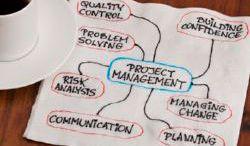Delivering projects on time and on budget is a common IT struggle. And it's why many corporations leverage PMOs to create sets of standards and methodologies to help facilitate project management and enable its PMs to deliver the best results for the customer. Larger companies and specific industries tend to also leverage PMOs to boost IT efficiency, cut costs, and improve project delivery. But I find it's important that all companies, of any size, develop a set of standards and a methodology. By setting guidelines and standards up front, the customer (and team) can understand how to move forward, what to expect and what is expected of them.
Pick a PMO Flavor
When implementing or participating in a PMO, there are several ways to go about it. One way calls for a PMO to act as a resource, providing training, guidance and best practices to PMs affiliated with other groups. The PMO, under this arrangement, helps set up, or adopt, methodologies and manages the implementation within projects. Another type of PMO is one that has its own group of PMs, who are assigned to projects for other groups and who help implement standards across projects. I'm not sure that one way is better than the other; I think it depends on the type of company and industry.
Making Your PMO Better
Over the course of my career, I've had PMOs that are good and helpful and some that aren't. Here are a few things to do to make yours better. 1.
Define standards: Create or adopt a methodology based on the company's needs. In today's world, there are two basic standards — waterfall and agile. You can run both within your company, and your company may need both. Either way, ensure that the methods can be adopted, and do your best as a PM to ensure that by running your projects consistently well. 2.
Develop documentation to support methodology: Documentation is necessary to ensure that projects can be managed. Try to avoid creating documentation for the sake of documentation. Instead, take a minimalist approach and try to develop documentation that ensures a level of accountability and purpose, without burying people in paperwork. Your company's documentation needs will be determined by many factors including the company’s industry, size and management. When I've been at companies that do not have a set of standards, I typically will expect at least the following documents to be completed throughout the life of a project:
- Charter of Vision document — to provide a high-level understanding of the strategic direction of the project, a CBA if needed, and to provide overall business scope and initial budget information.
- Scope & BR document — Depending on the size of the project, these can be combined into one document. The Scope document is the business understanding of the actual needs of the project. The BR document is the list of requirements from a user perspective (not IT). If you are working with an Agile project, these documents would be combined into one Product Backlog and managed at the appropriate level for the project.
- Technical document — It is important to document how the project was delivered. This can be functional specs (what it looks like and functions like) and behind the scenes specs (development, webservices, database etc...).
3.
Be a Leader — Go beyond the daily task of running your project. Look for ways to make it better. Be seen as a leader not just within the PMO, but also on the team. It's important to obtain constant feedback from your project teams and be willing to make changes for the team. That's what leaders do. They look for ways to constantly improve and bring those ideas into the conversation. Don't be afraid to take chances. 4.
Stay focused and consistent — Remember that part of being a good leader and PM is being consistent. It builds trust and integrity in how you do your work. It's important to set standards for yourself personally and also within the PM role you have. This will also provide credibility when speaking about subjects for which you may have a passion. If you don't have a set of standards or rules to live and work by, you won't be able to be consistent. 5.
Stay educated — It's important to stay up to date on current processes. Get involved with local PMI chapters or other PM organizations you may know. It's also good to get training on a regular basis, either through your company or on your own. It will help you define new ideas and how to resolve problems in new ways. Image:
Project Management Concept - Napkin Doodle by Bigstock 
